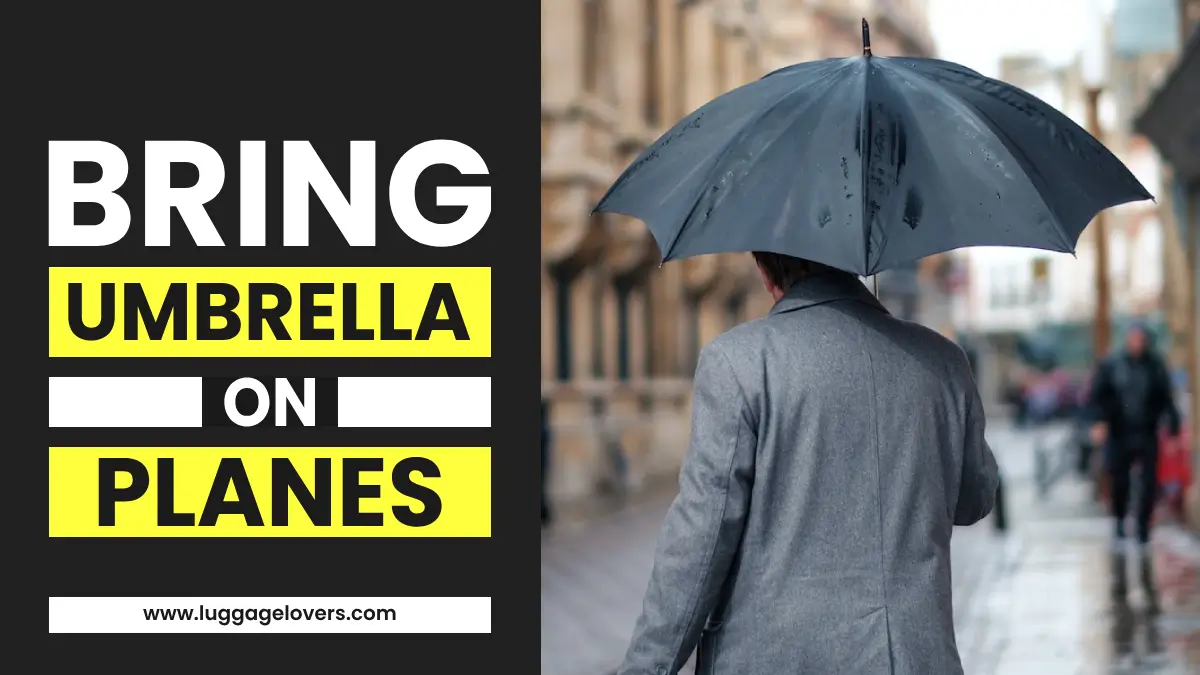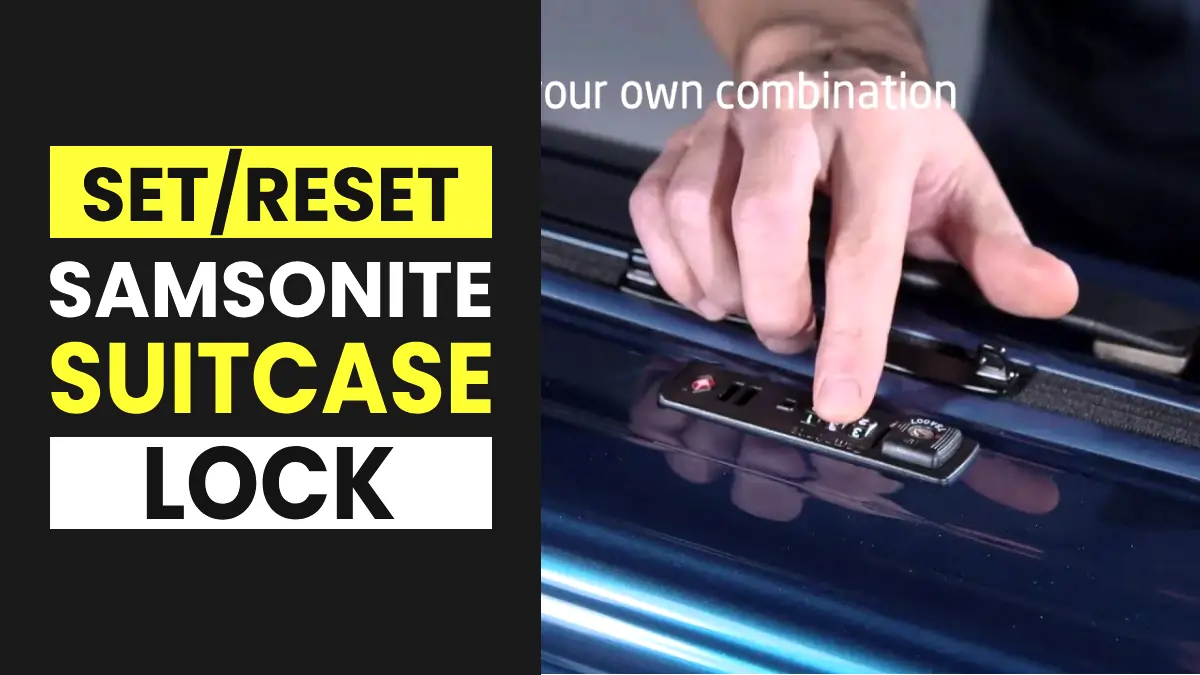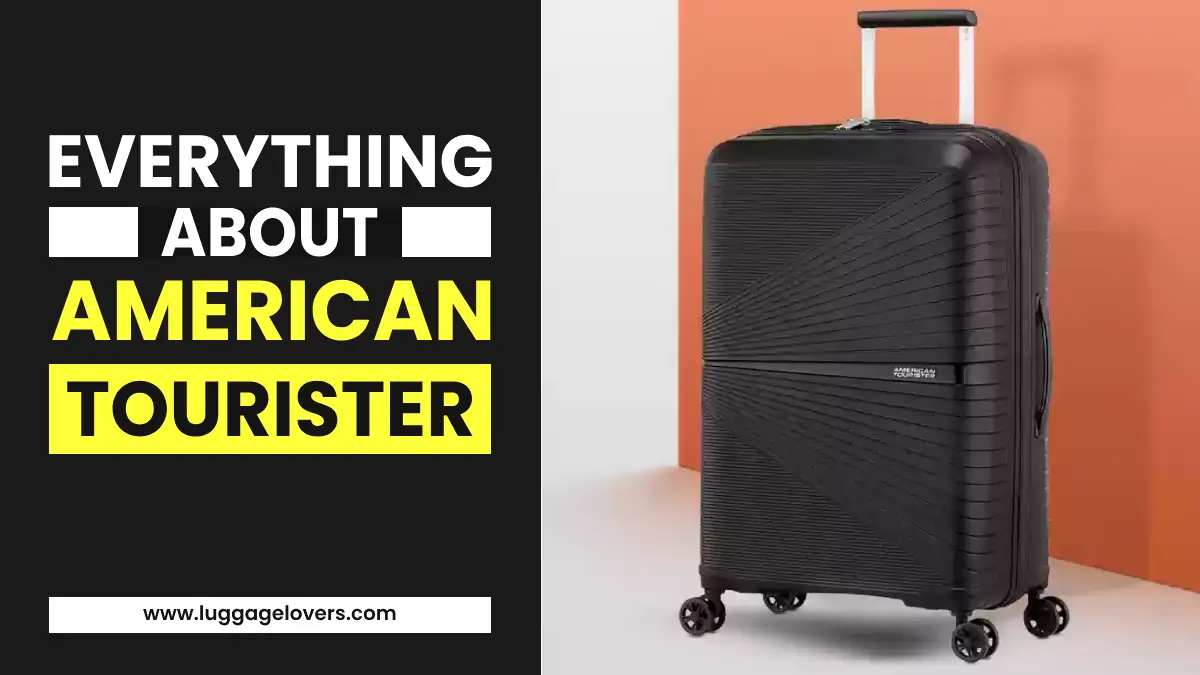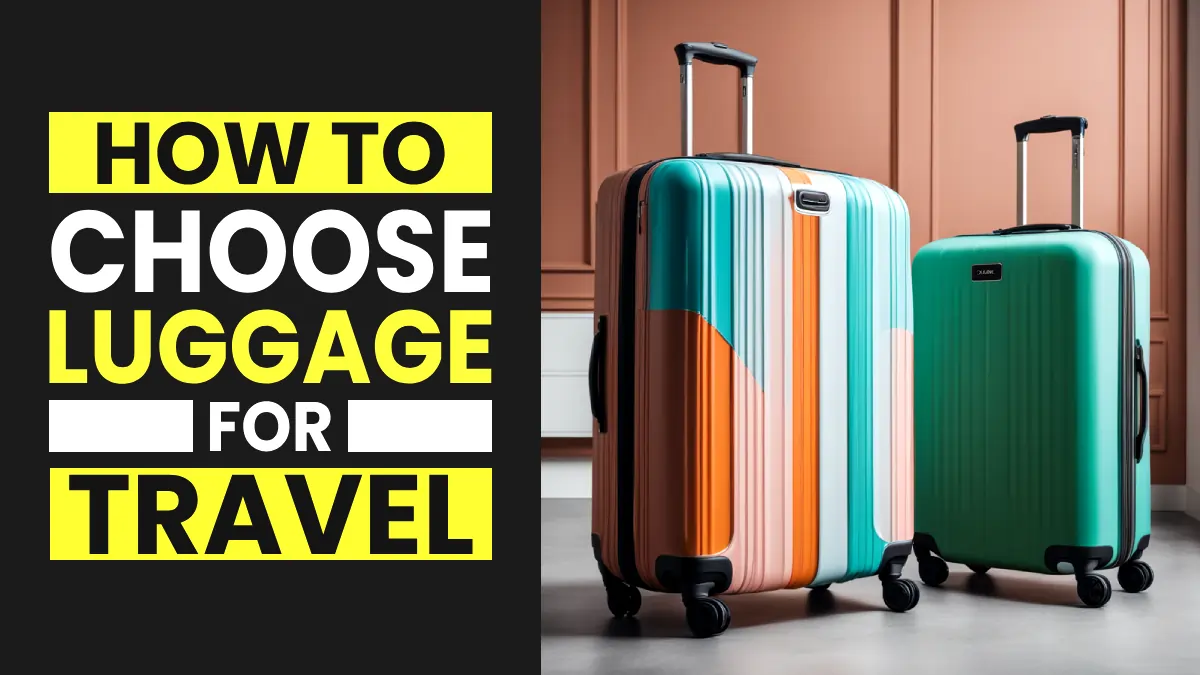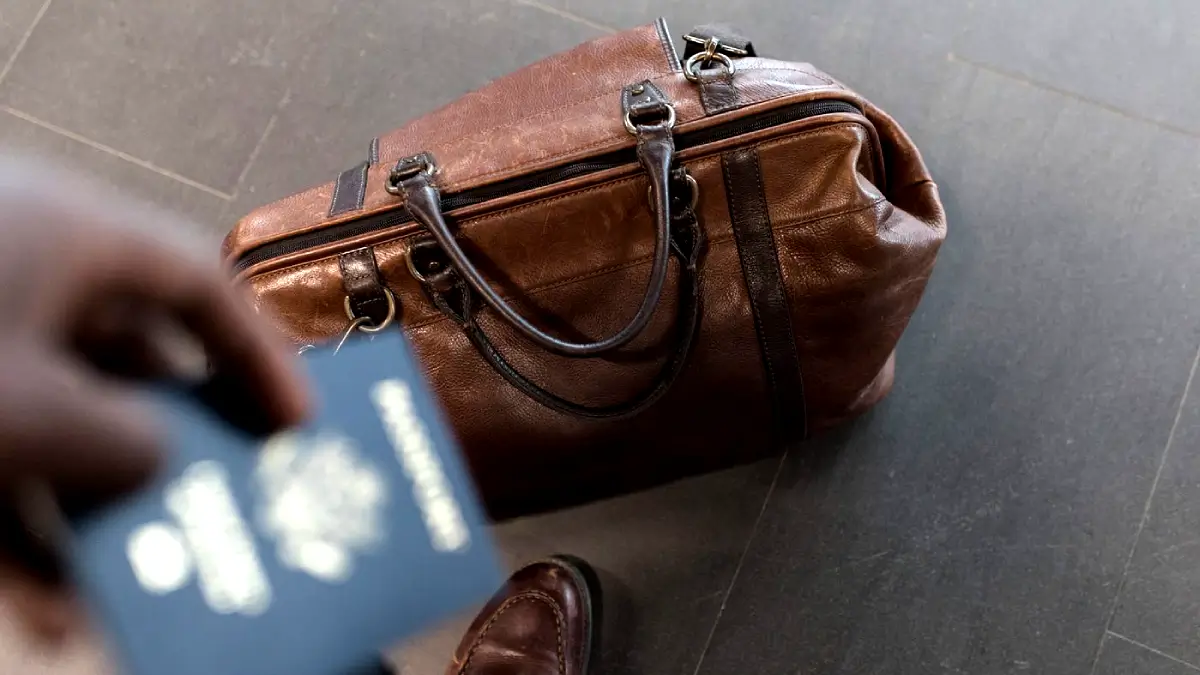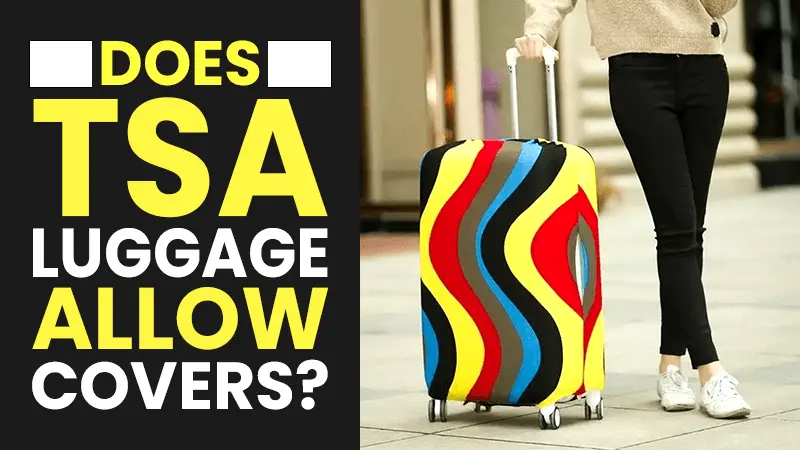Rollaboard vs Spinner Luggage: Which Type You Should Choose?
Are you looking for a piece of luggage but unable to decide which type of luggage you should get—a rollaboard or a spinner? A 2-wheel or 4-wheel suitcase? If these are the things on your mind, you’re in the right place.
When it comes to traveling, choosing the right luggage makes a huge difference. Each type of luggage offers a unique set of advantages and disadvantages that cater to different types of needs and preferences. Whether you’re a frequent flyer or an occasional traveler, you must understand the pros and cons of both luggage options so that you can make the perfect decision that fulfills your needs.
So let’s dive into the battle of rollaboard vs spinner luggage and explore the key differences between 2-wheel and 4-wheel luggage.
Quick Take
If you frequently travel to developed places and prefer convenience and maneuverability over durability, you must go with spinner luggage. On the other hand, if you’re someone who prioritizes ruggedness, durability and reliability and travels to places with rough and tough roads, rolling luggage or two-wheeled luggage are the best options you can consider.
Table of Contents
What is a rollaboard (2-wheeled) luggage?
Rollaboard luggage, also known as two-wheeled, rolling, upright, or inline luggage, is a type of luggage that is designed with two sturdy wheels at the bottom. It was initially invented by the brand Travelpro, which came into existence in 1987.
The defining feature of the rollaboard is its two wheels, which are positioned at the back of the luggage, and a retractable handle at the top that can be extended or retracted according to the user’s height and comfort. A rollaboard suitcase is pulled by the retractable handle on the two wheels in such a way that the handle is positioned at a 45-degree angle.
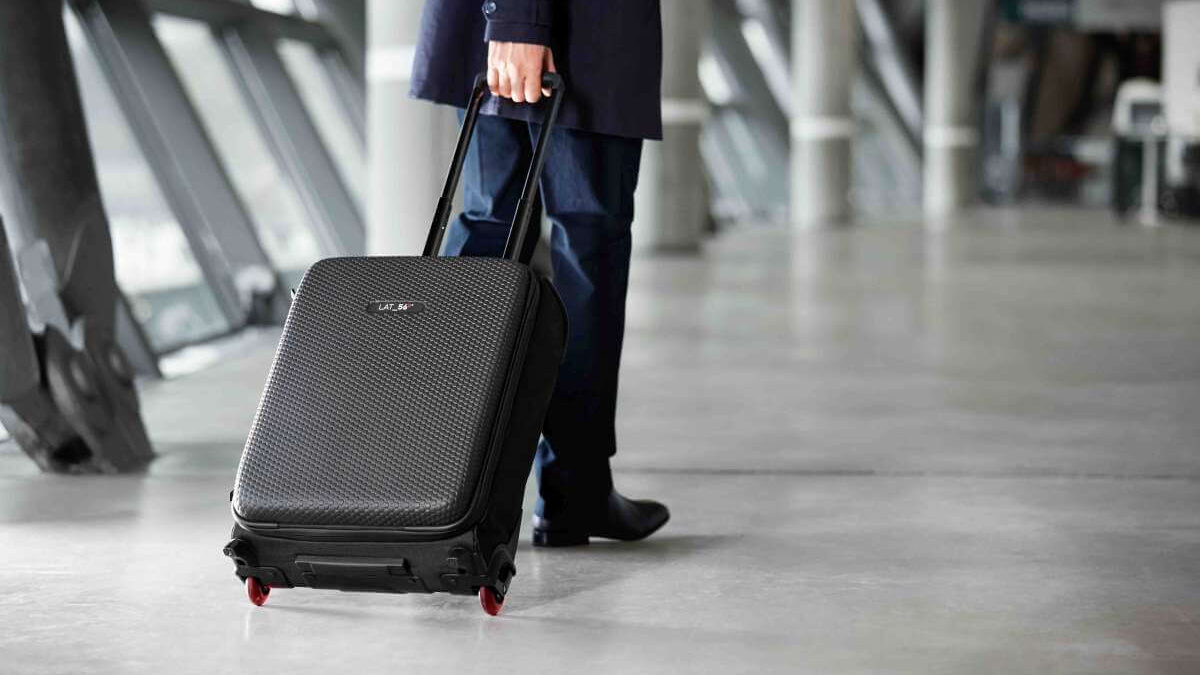
The wheels are durable and hard to break because they are integrated into the main structure of the suitcase. These wheels can easily navigate through various terrains, such as airports, stations, and even cobblestones streets, and help travelers drag their luggage behind them.
Undoubtedly, rollaboard luggage comes with a lot of advantages, but it also has disadvantages, which you’ll come to know later.
What is a Spinner (4-Wheeled) Luggage?
Spinner luggage, also known as four-wheeled luggage, is a type of luggage that comes with four wheels at the corners or bottom. These wheels are movable in 360-degree directions and offer more smoothness while maneuvering.
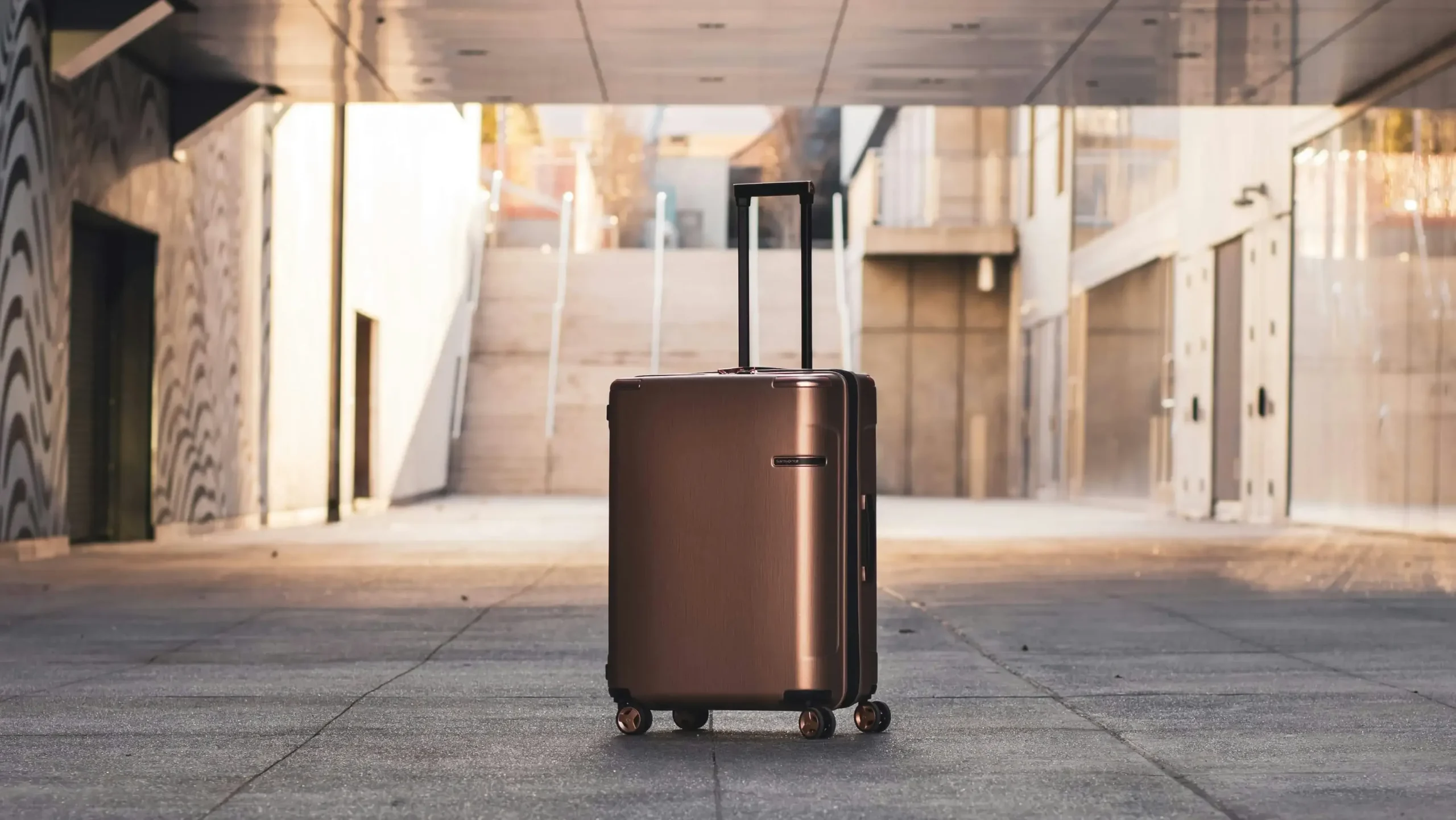
Unlike roller luggage, you can pull a spinner suitcase at 90 degrees in a vertical position. That’s really convenient because it won’t cause pain in your arms and shoulders. But these wheels are easier to break when compared to rolling luggage. Generally, these wheels are offered in hardside luggage and in a few softside luggage.
There are some suitcases that come with four double spinner wheels, which means eight wheels in total, such as the Samsonite Omni 2 hardside spinner luggage. These double wheels enhance their durability and make the luggage smoother on different types of surfaces, including cobblestone. Double-spinner wheels offer more stability than single-spinner wheels.
Undoubtedly, spinner luggage has gained huge popularity today because it offers better maneuverability and comes with plenty of benefits. Still, there are some drawbacks to spinner wheel luggage, which you’ll come to know in a bit.
Next Recommendation: What is 62 Linear Inches Luggage Rule by Airlines
Rollaboard vs Spinner Luggage: Which One Is Better?
Certainly, spinner luggage is getting more and more popular day by day because of its better maneuverability and stylish look. On the other hand, roller luggage is less popular compared to spinner luggage but still has some benefits that spinner luggage doesn’t have.
Both types of luggage come with their own benefits and drawbacks. We’ll compare both luggage options on different parameters such as durability, mobility, stability, price, size, and weight so that you can make a final decision according to your needs and preferences.
Stability
Stability depends more on the placement of wheels than on the types of wheels. Both types of luggage are generally the same in terms of stability. Any luggage may tip over if the wheels are not placed properly, whether it’s roller or spinner luggage. Properly placed and aligned wheels distribute the weight of the luggage more evenly, which results in great stability.
If wheels are placed very close to each other, the luggage is more likely to lose stability and tip over. These manufacturing mistakes are generally found in non-branded luggage. If you go with branded luggage such as Samsonite, Delsey, and Travelpro, they are really careful about everything, pay extra attention, especially on wheels, and place the wheels at the proper distance and alignment.
Additionally, the two supporting legs that come with roller luggage can still cause a stability problem if they are not properly aligned and placed accordingly. And It’s highly recommended that before choosing any luggage, you go through the customers’ reviews in order to be confident about the stability of that particular piece of luggage.
Also Read: Do Airlines Prefer Hard or Soft Luggage
Mobility and Performance
Mobility is the biggest decision-making factor. On different surfaces, both pieces of luggage perform differently. For instance, if the surface is smooth, spinner luggage is extremely easy to glide, but if you take it on a rough surface, it’ll surely disappoint you and get stuck in little crevices. While a rollaboard suitcase can easily handle this situation, let’s have a look at which luggage is suitable for which purpose.
- On Smooth Surfaces: Certainly, for smoother surfaces, spinner luggage is the first choice, as they are really good and better than rolling luggage. You can just push your spinner luggage with very little effort instead of pulling it behind you, and it’ll start rolling. Spinner wheels are designed in such a way that they don’t put any strain on your shoulders and back.
- In buses, metros, and Trains: For vehicles, rolling luggage proves to be better as it doesn’t start rolling by itself. On the other hand, spinner luggage may start rolling on its own in moving vehicles if you lose attention. However, there is some spinner luggage that comes with a wheel locking mechanism.
- On Regular Pavement: In this age, most of the cities are smooth except for a few places in Europe, so you can get spinner luggage because spinner luggage is definitely the king of smooth places and streets that won’t disappoint you. If you’ll have to come across a rough surface, you can just lift the luggage in your hand, so it won’t be a big problem.
- On a Carpet: Spinner luggage performs better than rollaboard luggage. But it doesn’t mean that rolling luggage doesn’t stand up to the mark. Their performance is also good, but comparatively, Spinner luggage is far better.
- On Cobblestone Streets: A rollaboard should be your first choice if you most of the time travel on cobblestone streets because spinner wheels get stuck between the gaps of cobblestones. The rolling luggage’s performance on cobblestone streets is excellent because of the bigger wheels. If you’re traveling with spinner wheels, you’ll have to carry your spinner in your hand while crossing cobblestone streets.
I personally prefer spinner luggage because it is easier to maneuver through airports, smooth streets, hotels, and offices. No doubt there are a few drawbacks to spinner luggage, but the benefits are far greater than those of rollaboard luggage.
You can tilt your luggage by 45 degrees to pull behind you if you’re walking on a moderately rough surface, including cobblestone streets. But if the surface is too rough, you should carry your luggage in your hands to avoid any damage.
Must Read: Are Luggage Covers Allowed By TSA
Durability and Longevity
In terms of durability, roller luggage or two-wheeled luggage takes advantage and goes one step ahead. This is because the two wheels that come with roller luggage are bigger than the four wheels of spinner luggage and provide better durability.
These wheels are harder to break because they are built into the main structure of the luggage body, while the wheels of spinner luggage are more likely to break as they are situated at the corners of the luggage.
No doubt, spinner wheels provide better maneuverability and are easier to glide on smooth surfaces such as airports and streets, but when it comes to durability, it’s the roller wheels that stand out first. Despite a lot of precautions, spinner wheels are likely to break and need proper care.
Price
Generally, spinner luggage is more expensive and costs you $20–$40 more because of the additional two wheels. Adding two additional wheels with proper wheel padding increases the overall cost because the two supporting legs in rollaboard luggage are way cheaper than spinner wheels.
That’s not it; there is something else that you should also keep in mind. Spinner wheels are more likely to break and less durable, so you may have to pay in order to replace them. If the luggage is under warranty, you may have to pay shipping charges. That can surely increase the overall price in the long run.
Also Read: Samsonite Winfield 3 DLX Detailed Review
Capacity
Rollaboard luggage wheels are installed in the main structure of the luggage, so the bottom part of the luggage is used efficiently to maximize the overall space. Rollaboard luggage is likely to store 5–10 liters more than similarly sized spinner luggage. So if you want more space to pack your belongings efficiently, rollaboard luggage is the one you should go for.
On the other hand, because of the “sticking out” wheels in the spinner luggage, some space is compromised in the main compartment. If you’re someone who doesn’t tend to overpack, then you can consider going with spinner luggage.
Weight
It’s very obvious that spinner luggage is a little heavier than rollaboard luggage because of the two additional wheels. Two spinner wheels with proper covering weigh 0.2–0.6 more than two small supporting legs.
However, the increased weight is not so much that should be considered, so it means you don’t have to worry at all about the weight if you’re confused between the two pieces of luggage.
Which one should you get: a roller or a spinner luggage?
As I mentioned above, both types of luggage come with their own benefits and drawbacks. Rolling luggage is a better option for some travelers, while for others, spinners are the best. It entirely depends on your needs and preferences. Let’s categorize both types of suitcases according to different purposes.
- For Businessmen: Businessmen have to spend a great time at the airport and generally visit those places that are developed and have smooth surfaces, so spinner luggage will be the best option to consider. Not only will spinning luggage make your travels convenient, but it will also enhance the personalities of businessmen.
- For Frequent Travelers: If you’re a frequent traveler, durability is the biggest factor, as frequent travelers travel many times a year and may have to go various places, even on rugged roads, so they need something that’s reliable and durable and can maximize the packing capacity. So rolling luggage is the one they should go for.
- For Occasional Travelers: For people who travel once or twice a year to different tourist destinations, spinners will be a great choice because they are easy to move and don’t need so much durability.
- For Those with Back Problems: If you have a back problem, go with a spinner suitcase without a second thought. Because spinner luggage doesn’t need to be tilted at a 45-degree angle, it won’t put a strain on your back and shoulders.
- For kids: Spinner luggage is the one that is easy to carry and doesn’t require a lot of effort, while rollaboard luggage requires strength. So spinner luggage is surely the perfect choice for kids.
Read Next: Samsonite Freeform Hardside Luggage Review


